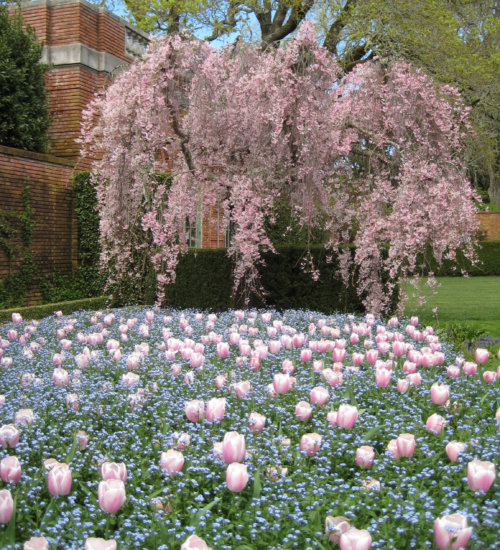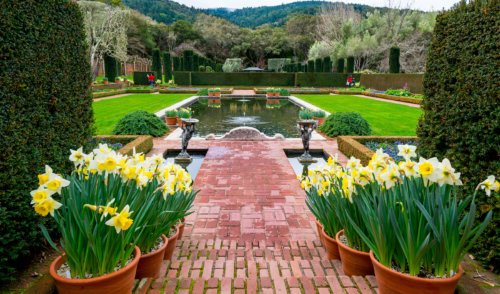
Celebrating “The Year of the Garden” at Filoli
On February 7th, 2017, Filoli reopens for the season, ready to dazzle guests once more. Pronounced “fie-low-lee”, Filoli is a historic estate and botanic garden positioned near the Crystal Springs Reservoir, just south of San Francisco. For decades the garden has thrilled and enchanted its guests, but this year, their opening day is an especially momentous occasion, as it marks the final year in Filoli’s centennial celebration: “The Year of the Garden”.
Two years ago in 2015, the garden celebrated “The Year of the Land” (100 years from when the site of Filoli was first purchased); 2016 was designated “The Year of the House & Collections” (100 years from when the house completed construction). “The Year of the Garden” promises to be one of the most splendid and visually-stunning yet, with lavish garden arrangements inspired by Monet’s garden at Giverny. “I wanted to do something big and I was fortuitous enough to take a trip to France in the Spring [last year],” Jim Salyards, Head of Horticulture at Filoli, told GC. “We drove directly to Giverny, and they were at their peak of tulip and bulb display. It was just so spectacular… so I drew some inspiration from what I saw there. My goal is always to give guests a full visit in the Spring.”
Filoli’s unusual name (which sounds a bit like the name of an eccentric Italian aristocrat) derives from the original owner William Bowers Bourn II’s personal credo: “Fight for a just cause; Love your fellow man; Live a good life.” Filoli is surrounded by the wild California landscape– a glimpse at what the land looked like before being built up. The property was built in the wake of the 1906 San Francisco earthquake and fire, when wealthy families retreated south to the peninsula in search of comfort and safety. The Bourns were the first to live there, from 1917 to 1936, before the estate was sold to the Roths in 1937. In 1975, Filoli was donated to the National Trust for the Historic Preservation, at which point it became the not-for-profit that it is today.
The site for Filoli was selected for its similarity to Muckross, a scenic Irish estate that William Bourn had earlier purchased for his daughter as a wedding present, and which is located along one of the Killarny Lakes (reputed to be one of the most beautiful stretches of Ireland’s landscape). With its own magnificent Crystal Springs nearby, Filoli is a grand 125 acres, with the formal gardens occupying 16 of them. There is an easy symbiosis between the cultivated nature and the surrounding environment; the formal gardens were specifically designed to enhance the native landscape’s scenery, a reimagining of the Renaissance style that embraces the indigenous California landscape. The marriage of the two is typified in the Sunken Garden– Filoli’s principle space– whose neat, formal lines are framed by the immensity of the wilderness behind it.
Designed as a series of rooms, the gardens are split into different walled areas, with lawns, pools, and parterres scattered among them. Each is different from the last: there is Yew Allée, lined with over two hundred Irish Yews, transplanted from Muckross, and Pear Allée; the Dutch Garden and the Woodland Garden. All are contained and sanctuary-like– it’s easy to imagine yourself in another life escaping to its corners with a good book and a slice of buttery pound cake. Mixed fruits in the orchard offer dessert year round, and the dappled olive orchard divides the formal garden from the agricultural fields.
In short, Filoli’s gardens are exactly the sort an old-fashioned heroine might find herself winding through– it feels as though it is from another era, full of grand vistas. Still, the garden has a timelessness about it, preserved by the rich undisturbed landscape surrounding it. The garden’s magnificence is manifested in its respect for its surroundings: the garden displays its own elegance, all the while acknowledging the incomparable splendor of Nature herself.



































